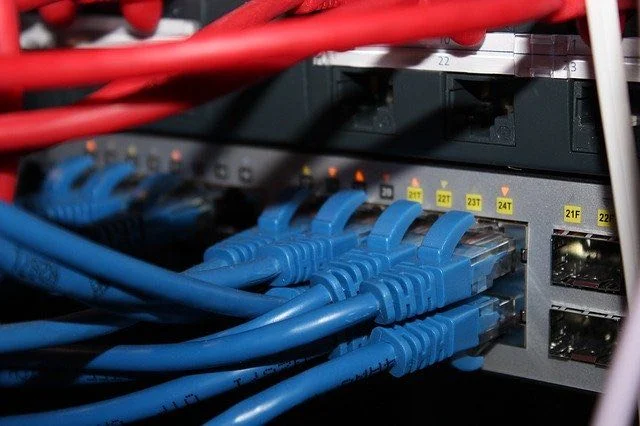Video surveillance systems are becoming increasingly popular and commonplace in both public and private settings. With these systems, the quality of the footage is a major factor in their success. In order to ensure that the quality of the captured footage is top-notch, many businesses are turning to PoE (Power over Ethernet) switches as part of their surveillance system setup. In this post, we will explore the benefits of using PoE Network Switches in video surveillance systems, from improved performance to cost-efficiency. Read on to find out how you can get the most out of your video surveillance setup with this technology.
Power over Ethernet (PoE)
Power over Ethernet, or PoE, is a technology that allows Ethernet cables to carry both data and electrical power. This can be useful in video surveillance systems, as it means that cameras can be powered through the same cable that is used to transmit their video signal. This can simplify installation and wiring, as only a single cable needs to be run to each camera.
PoE network switches can provide power to devices such as IP cameras, VoIP phones, and wireless access points. They work by sending electrical power along the same wires that carry data, using a process called Power Delivery (PD). PD switches are available in a variety of sizes and port counts, making them suitable for a wide range of applications.
When choosing a PD switch for your video surveillance system, it’s important to consider the number of devices that will need to be powered, as well as the total amount of power required. Most PD switches can provide between 15 and 30 watts of power per port. If you have multiple high-power devices that need to be powered by PoE, you may need to use multiple PD switches or invest in a higher-powered switch.
What are the benefits of using PoE network switches in video surveillance systems?
1. Reduced installation costs: PoE network switches can often be installed using existing Ethernet cabling, which can significantly reduce installation costs compared to traditional video surveillance systems.
2. Increased flexibility: PoE network switches offer increased flexibility in terms of where cameras can be installed, as they do not require a power outlet to be within reach. This can be especially beneficial in difficult-to-wire areas or when retrofitting an existing building for video surveillance.
3. Power backup: Most PoE network switches include built-in power backup capabilities, which means that if the main power supply is lost, the switch can continue to provide power to the connected cameras long enough for them to safely shut down or switch to a backup power source.
4. easier troubleshooting: PoE network switches typically come with comprehensive monitoring and troubleshooting features that make it easier to identify and solve problems with the system.
How do PoE network switches work?
PoE network switches work by providing power over Ethernet to devices that are connected to the switch. This is done by using the spare pairs of wires in the Ethernet cable to carry both data and power. PoE network switches can provide up to 15W of power per port, which is enough to power most devices that are used in video surveillance systems.
What types of PoE network switches are available?
There are a few different types of Power over Ethernet (PoE) network switches available on the market. The most common type is an unmanaged switch, which is typically used in small networks or for home use. These switches are easy to set up and usually don’t require any special configuration.
Managed PoE switches are a bit more complex and are typically used in larger networks. These switches offer more features and flexibility than unmanaged switches, but they also require more configuration and maintenance.
PoE+ switches are the newest type of PoE switch and offer even more power than traditional PoE switches. These switches can provide up to 30 watts of power per port, which is enough to power high-end devices like IP cameras or VoIP phones.
No matter what type of PoE switch you choose, make sure it’s compatible with the devices you want to power. Most PoE devices will work with any PoE switch, but some may require a specific type of switch (like a PoE+ switch) in order to function properly.
Conclusion
PoE network switches are a great option for anyone looking to maximize the efficiency of their surveillance system. By allowing up to four cameras and other peripherals to be powered by one switch, it greatly reduces clutter in wiring infrastructure while also providing greater flexibility when installing new devices. Furthermore, with advances in technology such as PoE+, power over Ethernet has become even more powerful and efficient than ever before. Whether you’re upgrading an existing security system or starting from scratch, PoE networks offer a range of features that will ensure your video surveillance systems run reliably and efficiently over the long term. sprunki horror Endless Fun Awaits!



